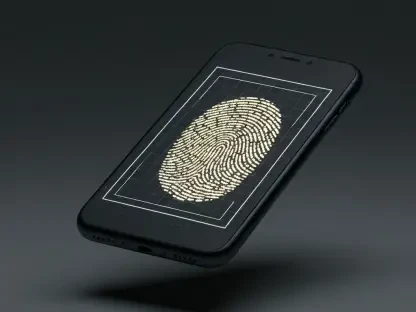Skylo, a burgeoning startup in the cellular IoT applications field, has made waves with its ambitious plans to revolutionize satellite technology, particularly through the promising deployment of direct-to-device (D2D) services across North America. This follows a significant windfall of $37 million in funding from high-profile investors, including BMW, Intel, and Samsung. The company’s strategic approach leverages the 3GPP’s 5G Non-Terrestrial Network (NTN) specifications outlined in Release 17, a move that aligns with the growing readiness of the market, as approximately 90% of chipset manufacturers are now incorporating this specification. Notable tech giants like MediaTek, Sony Semiconductor, and Qualcomm have already launched compliant chipsets, showcasing the widespread adoption and ripeness for market integration.
Qualcomm’s recent acquisition of 4G technology from IoT chip designer Sequans highlights the growing convergence of 4G and 5G IoT technologies, including the increasingly popular integration of satellite-enabled IoT. This trend underscores a strategic shift by major tech companies to expand their IoT capabilities, focusing on the added robustness and reach provided by satellite technology. These developments set the stage for a dynamic evolution in the field, driven by innovation and strategic investments, as companies strive to position themselves at the forefront of this rapidly evolving industry.
Strategic Leveraging of 5G NTN Specifications
Skylo’s innovative strategy revolves around the utilization of the 3GPP’s 5G NTN specification as described in Release 17, a critical component in their quest to dominate the IoT satellite market. This specification’s integration into the market is substantial, with roughly 90% of chipset manufacturers already embracing it. Industry leaders like MediaTek, Sony Semiconductor, and Qualcomm have taken substantial steps by developing compliant chipsets, suggesting a well-prepared market environment for Skylo’s expansions. These chipset manufacturers are pivotal in ensuring that the necessary hardware is in place, facilitating smoother and more efficient adoption of the technology across various IoT applications.
Qualcomm’s strategic investment in both 4G and 5G IoT technologies, underscored by its acquisition of 4G technology from IoT chip designer Sequans, is a testament to the broader industry trend. This acquisition signifies Qualcomm’s commitment to advancing its IoT capabilities, with a particular focus on the enhanced possibilities afforded by satellite integration. The move is a clear signal of the industry’s shift towards more versatile and wide-reaching IoT solutions, blending terrestrial and satellite technologies for greater connectivity and efficiency. Collectively, these strategies are indicative of a larger trend within the tech industry, with major players increasingly betting on the future of IoT and its symbiotic relationship with satellite technology.
Diverse Applications and Market Challenges
One of the remarkable aspects of Skylo’s technology is its applicability across a variety of sectors, exemplified by its implementation in cattle tracking. This particular use case demonstrates the practicality and utility of cellular IoT in real-world scenarios, providing comprehensive tracking of livestock—monitoring important variables such as location, diet, and reproductive status. Beyond agriculture, other sectors like maritime and energy are also reaping the benefits of Skylo’s technology. The versatility of satellite IoT showcases its potential to revolutionize operations in diverse industries, emphasizing the importance of cost-effective and power-efficient solutions provided by the 5G NTN system when compared to traditional satellite and UHF systems.
Despite its promising potential, the expansion of cellular satellite IoT remains in nascent stages, drawing parallels to the early phases of terrestrial cellular technology. This burgeoning field encounters several challenges, notably the necessity for a substantial user base interested in low-bandwidth, infrequent data transmissions. Companies like Swiss satellite firm Astrocast and SpaceX-owned Swarm have faced similar hurdles. Astrocast’s decision to go private in search of new investors and Swarm’s pivot to a D2D strategy reflect the ongoing strategic adjustments in the face of market realities. These moves highlight the early developmental nature of the industry and the adjustments companies must make to maintain viability and growth potential.
Strategic Partnerships and Competitive Advantages
Skylo, an up-and-coming player in the cellular IoT applications arena, is making headlines with its bold plans to revolutionize satellite technology through direct-to-device (D2D) services in North America. This follows a major funding boost of $37 million from heavyweight investors like BMW, Intel, and Samsung. Skylo’s strategy capitalizes on the 3GPP’s 5G Non-Terrestrial Network (NTN) specs from Release 17, a timely move considering around 90% of chipset manufacturers now include these specifications. Tech giants such as MediaTek, Sony Semiconductor, and Qualcomm have already rolled out compliant chipsets, signaling the market’s readiness for adoption.
The trend is also evident in Qualcomm’s recent acquisition of 4G tech from IoT chip designer Sequans, indicating the merging of 4G and 5G IoT technologies with satellite-enabled IoT. This move underscores a strategic shift among tech majors to enhance their IoT capabilities, emphasizing the robustness and reach of satellite tech. These unfolding developments point to a dynamic evolution in the field, propelled by innovation and strategic investments, as companies vie to lead this rapidly transforming industry.









